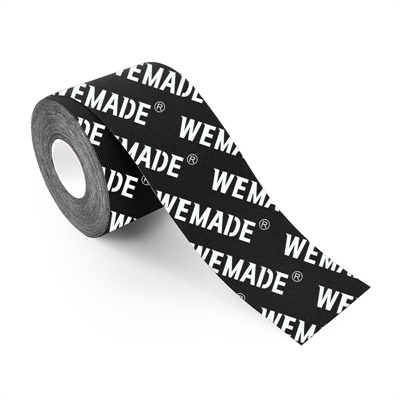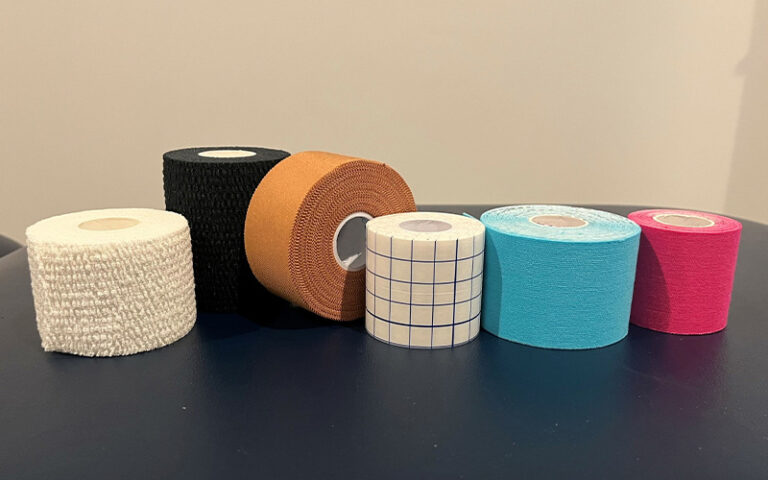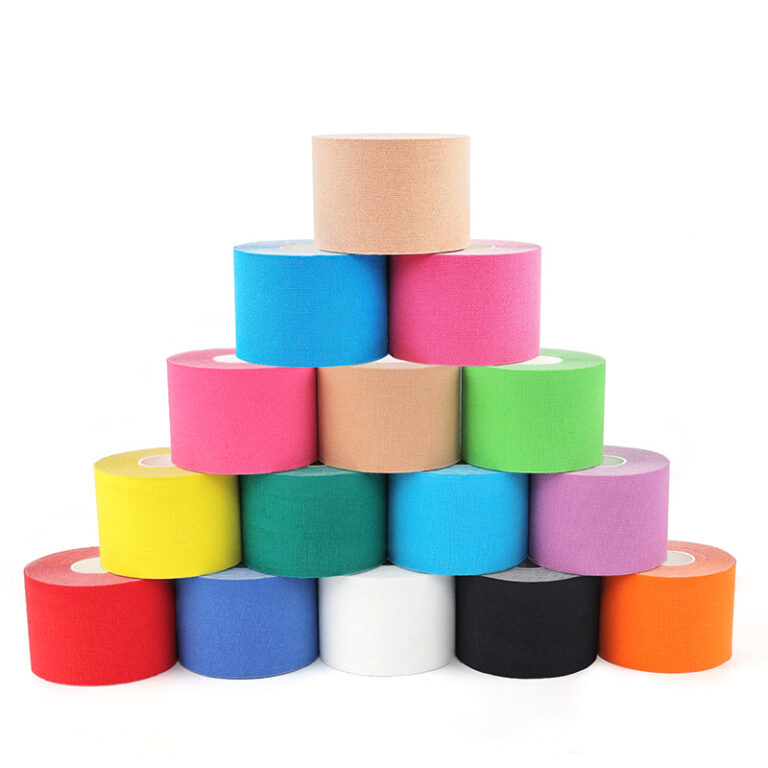You may have seen brightly colored bandages on the shoulders, knees, and backs of professional athletes, runners in the park, or even people who go to physical therapy. This new tool, which is often called muscle bandage tape or cotton kinesiology tape, has gone from being used in elite sports to being used for everyday health. But what is it, really? More importantly, how do you use muscle bandage tape the right way to get the most out of it?

What is muscle bandage tape?
WEMADE’s high-quality cotton kinesiology tapes are made to work with your body, unlike traditional rigid sports tapes that limit movement. The professional kinesiology tape manufacturer says that it is a thin, stretchy cotton tape with a medical-grade acrylic adhesive on it that mimics the stretchiness of human skin. When used correctly, it lifts the skin at a very small level, making room between the skin and the muscles and fascia underneath. This helps relieve pressure on pain receptors, improves blood and lymph flow, and gives muscles and joints gentle, moving support without limiting your range of motion.
Correct use is the most important thing. If you don’t use it right, it could break, irritate your skin, or even make you less able to play sports. This is a guide on how to use muscle bandage tape correctly.
1. Getting Ready Is Very Important
Make sure the skin is clean, dry, and hairless first. Sweat, oils, and lotions can all make the tape less sticky. Use soap and water to gently clean the area, then dry it completely. If you need to, shave. Do not put tape on open wounds, rashes, or skin that is sensitive.
2. Round Off the Edges
Cut the tape to the right length before taking off the backing. Use scissors to always round off the ends of each piece of tape. Sharp right angles are more likely to get caught on clothes, which can make the tape come off early and shorten its life.
3. Mastering Tension: The Main Idea
This is the most important thing to remember when using tape. Do not stretch muscle bandages to their full elastic limit.
To help your muscles (like easing pain in your quadriceps or calves): Before putting the bandage on the stretched muscle, stretch it to 25–50% of its maximum elasticity. The first and last 2–3 inches (about 5–7.5 cm) of the muscle bandage tape should be flat against the skin and not under any tension.
To stabilize joints like the knee or shoulder: Put a little more tension (50–75%) on the joint, but always keep the starting end under zero tension.
For lymphatic flow, like swelling after exercise: Usually applied in a fan shape with very little tension (10–25%) to gently lift the skin and help the lymphatic system drain.
Like a regular bandage, a common mistake is to pull the muscle bandage tape too tight. This makes the skin and nerves too sensitive and makes it hard to move.
4. How To Use: Activate By Rubbing
After you put the cotton kinesiology tape on your skin, rub the whole strip of tape hard with your hand. The friction will make the acrylic glue work fully by making heat. Tape that is applied correctly should feel firm but not too tight. You shouldn’t be able to feel it at all when you move.
5. Testing and Doing
After putting on the tape, move the taped area in all directions. The tape should be comfortable and give you support. If you feel any pressure, numbness, or too much pulling, take off the tape and put it back on, but with less tension.
How Long Will the muscle bandage tape Stay?
If you use muscle bandage tape from a trusted brand correctly, it should last 3 to 5 days and won’t come off even after you shower or sweat. Peel it off slowly in the direction of hair growth to avoid irritating your skin. Use an oil, like baby oil or coconut oil, to help the glue come off.
It’s important to pick the right cotton kinesiology tape
The instructions above are based on the idea that you are using a good product. The glue’s strength, the cotton fabric’s ability to breathe, and the elasticity’s ability to stay stable are all very important. Bad tape can cause skin allergies, not stick well, or lose its elasticity quickly. As a professional kinesiology tape manufacturer, WEMADE makes sure that the products you get work well, last a long time, and are safe for your skin.
In conclusion
Muscle bandage tape can help you recover, improve your athletic performance, and relieve pain when used correctly. They aren’t a cure-all; they’re a complex tool that helps the body heal itself. You can fully realize their potential to support an active life by following the right usage principles, such as paying attention to skin preparation, controlling tension, and making sure they are securely fixed. This will help you move more freely, recover faster, and feel stronger.



